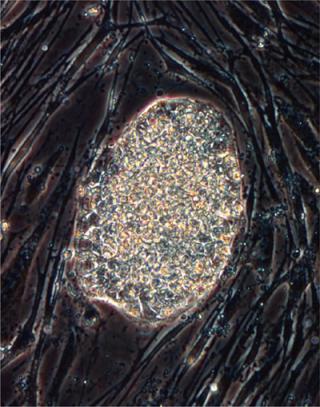Voices of Biotech
Podcast: MilliporeSigma says education vital to creating unbreakable chain for sustainability
MilliporeSigma discusses the importance of people, education, and the benefits of embracing discomfort to bolster sustainability efforts.
March 1, 2011
Most individuals who choose to pursue a career in healthcare would say they do so because they are driven by a fundamental desire to help people. If you ask people why they decided to work in the field of regenerative medicine, many will tell you it’s because they believe it is the most exciting area of medical research and that it holds the greatest potential to transform medicine as we know it. The transformational potential of stem cells and regenerative medicine is intuitively obvious to most people whether or not they have a scientific or technical background. If we can effectively harness the power and potential of regenerative medicine technology, we can truly transform the way medicine is practiced in many areas.
Conventional medical approaches are highly successful in many areas, but unfortunately they cannot effectively address problems and challenges that many patients face when dealing with the consequences of a stroke, heart disease, progressive medical conditions, autoimmune disease, or trauma. In many situations, current therapeutic and clinical approaches are limited to being largely palliative; they cannot alter the underlying cause of a disease or repair damage that has already occurred. The best they can do is to partially mitigate the consequences of the damage, perhaps slow further deterioration, and make a patient more comfortable. The impact on quality of life for such patients and their families is enormous, as is the cost of care.

Successful development of novel stem cell and regenerative medicine therapies could genuinely improve the lives of millions of patients who currently have little or no hope. From a US national healthcare perspective, regenerative medicine technologies have the potential to shift both the cost curve and the current limits on clinical outcomes in the right direction — simultaneously. Imagine what it could mean to develop safer and more cost-effective therapies for conditions that are both life-altering and hugely expensive to treat, those that will become ever more prevalent in an aging population. If we are successful in dealing with just a few of these problems, the impact will be dramatic.
The Alliance for Regenerative Medicine brings together leading clinical and research institutions, foundations, companies, patient advocacy organizations, and other groups committed to making the promise of regenerative medicine a reality. Our common goal is to make the collective vision of transforming medicine a reality and accelerate that process by working together and focusing on the following objectives:
Educating policy makers on the potential of regenerative medicine technology and approaches in all its forms by illustrating how these technologies can improve clinical outcomes and reduce healthcare costs
Advocating for development and implementation of policies that will incentivize investment to accelerate the development of new therapies while maximizing use of available resources through creation of more effective public–private collaborations
Working with the US FDA and other regulatory agencies to establish clear standards and policies that will ensure patient safety while creating a clear regulatory development path that can lead to safer and more effective medicines
Partnering with patient advocacy groups and others to help educate the media and the general public on the power and promise of stem cells and regenerative medicine
Working with the US National Institutes of Health to ensure robust funding resources for innovation and clinical translation across various disciplines contributing to regenerative medicine research.

Those are challenging objectives that will require sustained effort over time. By working together, we can improve the world around us through technological leadership, effective policy making, focused investment, and teamwork.
In September 2010, ARM held its first International Legislative “Fly-In” Day to meet with members of the US Congress and their staff as well as members of the UK parliament, to educate policy makers on important work in regenerative medicine, and to illustrate how emerging technologies can improve clinical care and reduce long-term healthcare costs, both of which are priorities worldwide. This day coincided with introduction of the Regenerative Medicine Promotion Act by representatives Diana DeGette (D-CO) and Michael Castle (R-DE) (1). Although the bill did not become law, it was just the first step in the process, and I’m optimistic about the impact we can have if we continue to work together. These are efforts everyone can be part of, whether by directly supporting ARM or volunteering time and effort to advocate for polices that promote the development of new regenerative medicines. I’m honored to work with so many dedicated individuals who are part of the Alliance and to have the opportunity to serve as chair as we work together to change medicine for the better.
SCIENCE FICTION/SCIENCE FACT
For my five-volume novel series, Racing History, I envisioned a future in which (among other things)
longevity treatments help those who can afford them lead active, healthy lives well into their hundreds
whole organs and limbs can be cloned and reconstructed from a few cells (again, for a price)
stem-cell–based “Kwik-Heal” wound-repair gel and nanomedicines are as cheap and easy to use as bandages and over-the-counter medications
gene therapies help space travelers overcome cell damage from radiation exposure
genetic engineering has produced human–animal hybrids who face troubles with civil rights, rampant cancers, and elaborate fertility issues
and a bioengineered virus helps the “good guys” defeat a seemingly invulnerable alien enemy.
Covering the biotechnology industry in my day job has clearly influenced the science fiction I write in my spare time! As an author, I’m particularly interested in the social consequences of technological advancement: Will cost issues exacerbate class divisions and even lead to real class warfare? Will whole new species remain the property of their developers? Will our technologies outpace our ability to control them? Although Racing History is set some 200 years in the future, I’ve been surprised to s
ee how much of what I thought of as futuristic has come to pass just since I was writing the first draft a decade ago. And I do see some sociological questions already presenting themselves.
Relatively small events today can have far-reaching effects in the future (another theme of my fiction). For example, the argument between Nicola Tesla and Thomas Edison regarding alternating and direct current ultimately determined what our modern electrical grids look like and how they operate. Restrictions placed by George W. Bush’s administration on embryonic stem cell research encouraged surprising advances in the inducement of pluripotency. Robotics technologies have contributed much to labor difficulties — when a factory formerly employing hundreds can now function with mere dozens of workers. And a cell line that early pioneers just happened to be working with already (and know pretty well) — Chinese hamster ovary cells — became the primary work-horse mammalian expression system of the protein biopharmaceutical industry.
Currently hundreds (maybe thousands) of regenerative medicine concepts are in various stages of development by laboratories all over the world. What fraction of those will find their way to eventual market success, what products will change the world, and how? Will some cause unforeseen problems? Which managers can be trusted to lead their companies to an ethical as well as profitable future? How do we identify now the small ripples that will make big waves as time goes by? These are some of the questions faced by investors, patients, physicians, and policymakers looking at any promising new technology. Cell therapies and regenerative medicines are no exception.
The science is no longer fiction — and the future is inevitable. But as we — you — build that future, remember that there are no stupid questions. There are, however, uninformed and misinformed people who are ready to offer plenty of wrong answers, some of which may be detrimental to both your industry and even society as a whole. Meetings like ARM’s fly-in day are as important to regenerative medicine today as the now-legendary Asilomar conference was to biotechnology in general almost 40 years ago. Their outcomes will be as vital to the industry’s future as manufacturing methods, training for all people involved, and money to pay for it all. Indeed, they may well determine where all those come from — and where they go.
—Cheryl Scott, senior technical editor
About the Author
Author Details
Dr. Gil Van Bokkelen is chairman of the Alliance for Regenerative Medicine (2099 Pennsylvania Avenue NW, Washington, DC 20006; www.alliancerm.org) and chairman and CEO of Athersys Inc. 3201 Carnegie Avenue, Cleveland, OH 44115-2634; 1-216-431-9900, fax 1-216-361-9495; www.athersys.com/Home/tabid/36/Default.aspx.
1.) Castle, M, and D. DeGette. 2010. HR 6173: Regenerative Medicine Promotion Act of 2010, 111th US Congress, 2009–2010.
You May Also Like